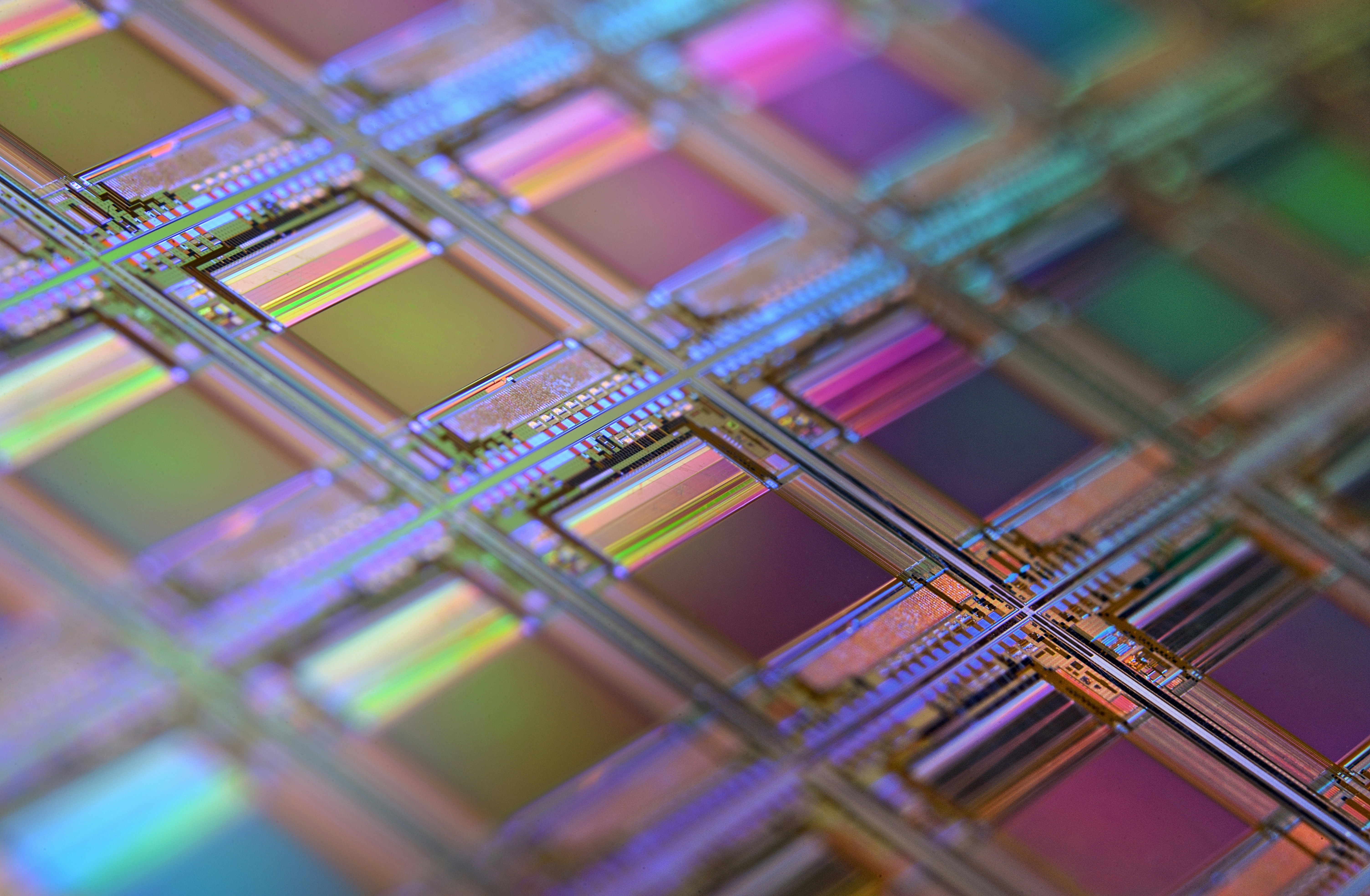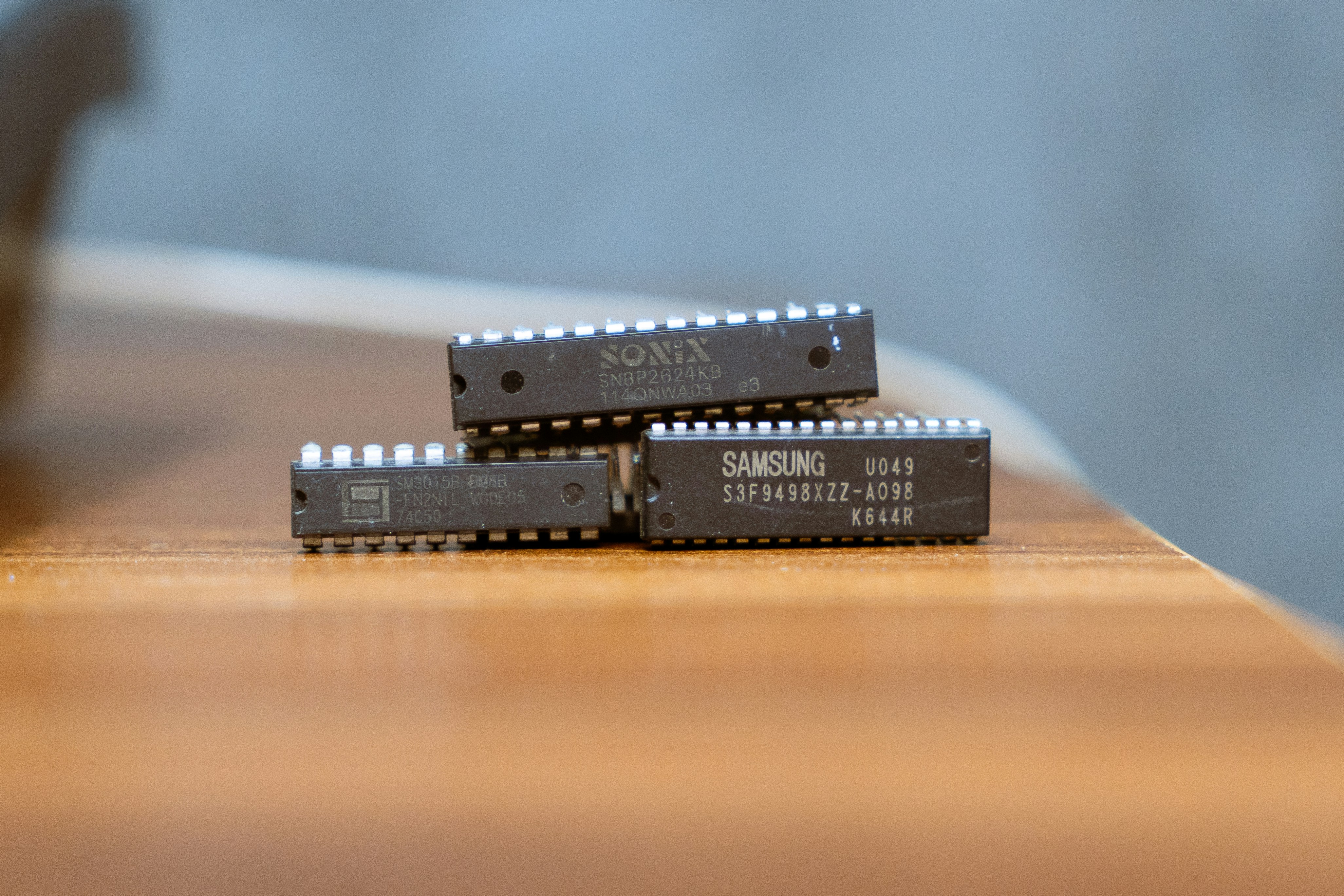
Career Paths in the Semiconductor Industry: From Entry-Level to Leadership and Beyond
Semiconductors power today’s digital world. From smartphones and laptops to autonomous vehicles and advanced medical devices, these tiny chips form the backbone of modern technology. For UK professionals seeking a dynamic career at the intersection of electronics, materials science, and cutting-edge manufacturing, the semiconductor industry offers limitless potential. With rising demand for high-performance computing, 5G, artificial intelligence (AI), and electric vehicles, the need for skilled semiconductor experts continues to surge across the globe—and the UK is no exception.
In this guide, we will explore:
The growing significance of semiconductors in the UK tech ecosystem
Common entry-level roles for recent graduates or early-career professionals
Core skills and qualifications needed for success
Mid-level positions where you can shape product roadmaps or oversee manufacturing lines
Senior and leadership paths in R&D, product management, and strategy
Emerging trends defining the future of chips and microelectronics
Practical tips for job seekers on www.semiconductorjobs.co.uk
By the end, you’ll have a clear picture of how to forge, develop, and excel in a semiconductor career—one where you design and deliver the integrated circuits and electronic components that drive next-gen innovation.
1. Why Semiconductors Matter in the UK
1.1 Underpinning Modern Technology
Semiconductors—fabricated primarily on silicon wafers—are the essential building blocks of electronic systems. These tiny chips enable:
High-Performance Computing: CPUs, GPUs, and AI accelerators.
Mobile and IoT Devices: Power management ICs, signal processors, RF transceivers.
Automotive Electronics: Advanced driver-assistance systems (ADAS), power electronics in EVs.
Telecom and Networking: 5G modems, fibre-optic transceivers, network switches.
1.2 Growing UK Investment and Opportunities
While traditionally centred in the US and Asia, the UK plays a vital role in semiconductor R&D, design, and manufacturing. The government and private investors continue to support:
Specialised fabs and foundries focusing on compound semiconductors (e.g., GaN, SiC) for power electronics and next-gen wireless.
Design hubs and start-ups that excel in chip IP (intellectual property) or niche markets like sensors and low-power ICs.
Collaborations between universities and industry, fostering breakthroughs in materials, packaging, and device architectures.
1.3 Career Versatility
Semiconductor professionals can work in design, process engineering, product management, testing, R&D, or quality assurance, among other areas. With applications expanding in AI, green energy, and autonomous vehicles, you can align your career with the technologies shaping tomorrow’s world.
2. Entry-Level Roles in the Semiconductor Industry
For newcomers, semiconductor jobs typically revolve around design, fabrication, or testing. These positions build foundational skills—whether that’s learning how to implement integrated circuit designs, operate wafer fabrication equipment, or test final products for compliance.
2.1 Junior IC (Integrated Circuit) Design Engineer
Responsibilities
Assisting in the creation and verification of digital or analog circuits, often using hardware description languages (e.g., Verilog, VHDL) and EDA (Electronic Design Automation) tools.
Running simulations to ensure design meets performance specs, timing constraints, and power budgets.
Qualifications & Skills
A background in electrical/electronic engineering or computer engineering.
Familiarity with gate-level design, basic transistor theory, or fundamental signal processing.
Exposure to EDA suites (e.g., Cadence, Synopsys) can be advantageous.
Career Development
As you gain proficiency, you may specialise in RTL design, analog layout, or advanced verification—often leading to senior design roles or specialized domains like RF or mixed-signal ICs.
2.2 Process / Manufacturing Technician
Responsibilities
Operating and maintaining equipment in wafer fabs—e.g., lithography scanners, etchers, deposition tools.
Monitoring process parameters, troubleshooting yield issues, and ensuring production quality.
Qualifications & Skills
A diploma or degree in a relevant engineering field (electronics, materials science), or a strong technical background.
Knowledge of cleanroom protocols, chemical handling, and wafer process flows (photolithography, etching, CMP, etc.).
Career Development
Technicians can progress to Process Engineer or shift into Equipment Specialist roles, responsible for optimizing yields, implementing new process steps, or overseeing complex manufacturing lines.
2.3 Semiconductor Test Engineer (Junior)
Responsibilities
Designing test plans to verify chip functionality, parametric performance, and reliability.
Operating automated test equipment (ATE) for packaged ICs, capturing data, and generating reports on test results or failure analysis.
Qualifications & Skills
A background in electrical/electronics engineering or physics, comfortable with scripting languages (Python, LabVIEW) for test automation.
Familiarity with test methodologies—boundary scan, built-in self-test (BIST)—can be an asset.
Career Development
Potential pathways include Senior Test Engineer or transitioning into product engineering, QA, or reliability engineering focusing on advanced testing methodologies and analysis.
2.4 Applications Engineer / Field Engineer (Entry-Level)
Responsibilities
Supporting customers in integrating specific semiconductor products—like microcontrollers, sensors, or power ICs—into their systems.
Troubleshooting design issues, conducting demos, and delivering technical presentations.
Qualifications & Skills
A strong foundation in electronics, plus communication and customer-facing skills.
Basic hands-on experience with development boards, circuit debugging, or software integration.
Career Development
Experience with client use-cases can lead to Product Specialist or Product Marketing roles, bridging technical and commercial domains.
3. Core Skills and Qualifications
To thrive in semiconductors, you’ll blend theoretical knowledge with practical engineering capabilities, plus soft skills for teamwork and problem-solving.
3.1 Technical Expertise
Electronics Fundamentals
Transistor theory (MOSFETs, BJTs), circuit design, signal integrity, power considerations, and noise analysis.
Semiconductor Physics
Band structures, doping, and device operation (diodes, transistors, etc.).
EDA Tools
Cadence, Synopsys, Mentor Graphics for IC design, layout, verification, or yield analysis.
Manufacturing Processes
Photolithography, deposition, etching, doping, packaging techniques, and cleanroom protocols.
Programming / Scripting
Python, TCL, or other languages for test automation, data analysis, or design verification flows.
3.2 Soft Skills
Collaboration
Semiconductors demand cross-disciplinary interactions—designers, process engineers, marketing teams, and management. Clear communication fosters synergy.
Analytical Problem-Solving
Yield excursions, circuit timing violations, or parametric drift require structured investigation and iteration.
Attention to Detail
A small layout or process error can ruin entire wafer batches—precision is paramount.
Adaptability
Evolving node technologies (7nm, 5nm, 3nm), new packaging approaches (3D stacking, chiplets) require constant learning.
3.3 Education and Training
Undergraduate Degrees
Electrical/Electronic Engineering, Physics, Material Science, or Mechatronics commonly feed into semiconductor roles.
Postgraduate Study
MSc or PhD specialisations in microelectronics, solid-state physics, or advanced packaging are beneficial for R&D or senior design.
Professional Certifications
Some industry courses (e.g., from SEMI) or specific foundry training on equipment operation can boost your CV.
On-the-Job Mentoring
Many semiconductor firms offer graduate programs or apprenticeships for structured skill-building.
4. Mid-Level Roles in the Semiconductor Industry
With a few years’ experience—often 2–5 years—engineers gain greater autonomy, manage small teams, and assume more complex technical or managerial responsibilities.
4.1 Senior IC Design Engineer / Team Lead
Key Focus
Leading block-level design, verification, or layout for advanced chips—e.g., application processors, power management ICs, or RF transceivers.
Typical Responsibilities
Translating system requirements into microarchitecture, reviewing design specs and test benches, orchestrating design reviews, and collaborating with verification teams on coverage.
Mentoring junior designers, ensuring compliance with timing, power, and area constraints.
Skills Needed
Deep knowledge of design flows—synthesis, place-and-route, static timing analysis—and advanced node challenges (FinFET, gate-all-around).
Effective leadership, risk assessment for design schedules, and skill in debugging complicated corner-case failures.
4.2 Process / Equipment Engineer (Mid-Level)
Key Focus
Owning specific steps in the wafer fab process (etching, lithography, deposition) or entire tool sets, optimising yields, and ensuring stable production.
Typical Responsibilities
Developing new process recipes, identifying root causes of yield losses (particles, misalignment, contamination), and trialling advanced materials or chemistries.
Coordinating with maintenance teams on tool calibration, parts replacement, and process improvements.
Skills Needed
Practical experience with multiple process steps, plus data analysis tools (SPC charts, DOE methodologies).
Problem-solving to handle real-time production issues while balancing cost and throughput.
4.3 Product Engineer / Product Manager
Key Focus
Overseeing a semiconductor product’s lifecycle—requirements gathering, design readiness, production ramp, and end-of-life decisions.
Typical Responsibilities
Aligning R&D, manufacturing, and sales to ensure on-time deliveries. Monitoring yields, production volumes, and performance metrics.
Engaging with customers to gather feedback, refine specs, and anticipate future market demands.
Skills Needed
Cross-functional communication, project management, basic technical background to interface with design or fab teams.
Business acumen—understanding cost structures, competitor analysis, and ROI.
4.4 Applications / Field Applications Engineer (Mid-Level)
Key Focus
Serving as a technical interface between the chip supplier and OEM clients, ensuring smooth device integration and solving application-specific challenges.
Typical Responsibilities
Offering design reviews, assisting with layout guidelines, debugging performance issues on the client’s boards, and presenting new product features.
Collecting market insights for internal R&D or marketing teams.
Skills Needed
Knowledge of system-level design, firmware/hardware co-debugging, strong customer-facing skills.
Ability to travel, present effectively at conferences or training sessions.
5. Senior, Leadership, and Specialist Paths
After 5–10 years or more in the semiconductor field, professionals can ascend to strategic or highly specialised roles shaping product lines, pioneering advanced R&D, or managing large teams and budgets.
5.1 Principal / Distinguished Engineer
Scope
Serving as a top technical authority on cutting-edge design or process challenges (e.g., advanced node transistor architectures, high-speed memory interfaces, next-gen wafer processes).
Key Responsibilities
Guiding complex design decisions, resolving critical yield obstacles, or introducing new technology solutions.
Mentoring mid-level engineers, shaping best practices, and representing the company in industry standardisation groups.
Essential Skills
Deep domain mastery, published technical papers, or proven track record in delivering flagship chips or process breakthroughs.
Strategic foresight, bridging R&D and product-level considerations.
5.2 Technical Manager / Engineering Manager
Scope
Overseeing engineering teams—design, process, test—ensuring alignment with business goals, project timelines, and resource allocation.
Key Responsibilities
Handling hiring, performance reviews, and staff development, balancing budget constraints, risk management, and quality.
Coordinating cross-department initiatives—e.g., working with marketing on product specifications or with fab partners on tape-out schedules.
Essential Skills
Leadership, conflict resolution, project management, plus the ability to communicate complex technical data to stakeholders and executives.
5.3 Director of Product / Head of Product
Scope
Shaping the long-term roadmap for one or more semiconductor product families (e.g., power ICs for EVs, wireless chipsets for 5G).
Key Responsibilities
Defining product strategies, setting pricing, forging partnerships with foundries, and guiding marketing campaigns.
Making go/no-go decisions on next-gen chip developments based on market trends, cost analysis, and competitive positioning.
Essential Skills
Strong business acumen, strategic thinking, negotiation, and in-depth understanding of supply chain dynamics.
Ability to lead multi-year product development cycles, from concept to commercial launch.
5.4 VP of Engineering / CTO (Semiconductors)
Scope
Leading entire R&D or engineering divisions, charting corporate-level technical strategy, and ensuring alignment with organisational goals.
Key Responsibilities
Overseeing complex portfolios—custom SoCs, advanced wafer nodes, packaging solutions—often collaborating with major OEMs or industry alliances.
Allocating budgets, shaping technology partnerships, and representing the company at investor or board meetings.
Essential Skills
Visionary leadership, proven track record in orchestrating large engineering teams, familiarity with global chip markets, IP licensing, and manufacturing partnerships.
Excellent executive communication, networking, and risk management.
6. Emerging Trends in Semiconductors
Staying informed about cutting-edge developments will help you align your career to in-demand roles:
3D ICs and Advanced Packaging
Stack chiplets vertically or side-by-side for greater performance and lower latency, requiring new bonding and thermal solutions.
Compound Semiconductors
Materials like GaN (gallium nitride) or SiC (silicon carbide) are crucial for power devices in EVs, renewable energy, and RF applications for 5G/6G.
Heterogeneous Integration
Combining CPUs, GPUs, FPGAs, AI accelerators, and custom logic in modular, chiplet-based packages for tailored performance.
AI and High-Performance Compute
Designing specialised accelerators (TPUs, NPUs) that handle neural network computations with minimal power consumption.
Quantum and Beyond-CMOS
Explorations into quantum computing chips, spintronics, and other post-CMOS solutions to keep Moore’s Law progress feasible.
Sustainability and Circularity
With environmental concerns rising, industry seeks to reduce energy usage, resource consumption in fabs, and ensure ethical supply chains.
7. Practical Tips for Job Seekers on www.semiconductorjobs.co.uk
7.1 Tailor Your Application Materials
Highlight Relevant Projects
Mention FPGA prototyping, transistor-level simulations, or improvements you made to yield or test coverage.
Quantify Accomplishments
E.g., “Enhanced yield by 15% via improved lithography process,” or “Optimised SoC’s power by 30% through advanced low-power design techniques.”
7.2 Demonstrate Continuous Learning
Hands-On Experience
Showcase personal or university projects using popular EDA tools, your GitHub code samples, or test methodologies.
Certifications / Courses
Any specialized training from foundry partners (TSMC, GF) or vendor sessions (Cadence, Synopsys) highlights your commitment to professional development.
7.3 Prepare for Technical Interviews
Refresh Fundamentals
Transistor theory, circuit analysis, digital logic design, or semiconductor physics are common discussion points.
Expect Scenario-Based Questions
E.g., “How would you address setup time violations in a high-speed design?” or “What steps to investigate a sudden yield drop in lithography?”
7.4 Network and Stay Current
Join Professional Bodies
Groups like the Institute of Electrical and Electronics Engineers (IEEE) or Institution of Engineering and Technology (IET) offer networking, conferences, and publications.
Attend Industry Events
Semicon Europa, SEMI conferences, or local meetups on microelectronics allow you to connect with peers and recruiters.
8. A Typical Semiconductor Career Progression: Case Study
Consider a hypothetical career path for Dr. Maria Bennett:
Junior IC Design Engineer
Joined a design house focusing on ASICs for industrial automation. Contributed to RTL coding, block-level simulations, and basic timing closure tasks.
Mid-Level Verification Engineer
Transitioned to a verification-heavy role, implementing test benches, coverage-driven verification strategies, and ensuring design compliance with specs.
Senior SoC Architect
Led architectural definition for a complex SoC including CPU cores, custom accelerators, and advanced power management. Mentored younger design staff, drove critical design reviews.
Technical Manager
Oversaw multiple design teams, balanced resource allocations, shaped design methodology improvements, and engaged with process engineers for advanced node migrations.
Director of Product
Guided the strategic roadmap for new microcontrollers targeting IoT applications, negotiated foundry partnerships, pitched the product line to executives, and set budgets for R&D expansions.
From hands-on circuit design to executive-level product ownership, Maria’s story exemplifies how technical depth and project leadership can propel you through increasingly influential roles in semiconductors.
Conclusion
The semiconductor industry sits at the core of global technology, enabling each leap in computing power, connectivity, and miniaturisation. For UK professionals looking to shape next-gen chips—whether in IC design, process engineering, testing, or product management—this field promises challenging, rewarding roles in a market that’s ever-expanding and mission-critical to a digital future.
Through a balanced skill set—covering semiconductor physics, circuit design, manufacturing processes, and collaborative project management—you can grow from early-career tasks like device testing or layout to leading entire product lines or forging advanced R&D in microelectronics. As you deepen expertise and seize leadership opportunities, you’ll help steer the trajectory of the UK’s—and the world’s—semiconductor ecosystem.
Explore Opportunities at www.semiconductorjobs.co.uk
Ready to embark on or elevate your semiconductor career? Visit www.semiconductorjobs.co.uk to find roles across the UK’s microelectronics landscape. Whether your passion is crafting high-performance chips, pioneering novel materials, or streamlining manufacturing, there’s a position poised to harness your talents—driving innovation in our increasingly connected, compute-driven world.


